Ken Fritz is a legend. In terms of DIY speaker guys, I doubt anyone has beaten his dedication. He spent 27 years creating what he saw as the perfect stereo system: a gargantuan beast with 35,000 watts, seven custom built speakers, three 9-foot 6-inch tall line array speakers and a turntable that weighs 750 pounds. So when he passed from ALS last year, the question arose: What do you do with a sound system that huge?
If you have never seen the above documentary, “One Man’s Dream,” I urge you to watch it. It’s just under an hour, and it details Ken’s dream to create the greatest sound system imaginable. His process was meticulous; the undertaking was gargantuan. He didn’t just luck into an auction and buy stuff– he made this entire thing by hand. He spent 5 years building the room alone, which he patterned after a concert house in Osaka and made with 12 inch cinderblock hurricane walls full of gravel. He made all of the furniture in the room specifically so that it would all match and not leave negative space. He even built the grandfather clocks that adorn the corners of the room.
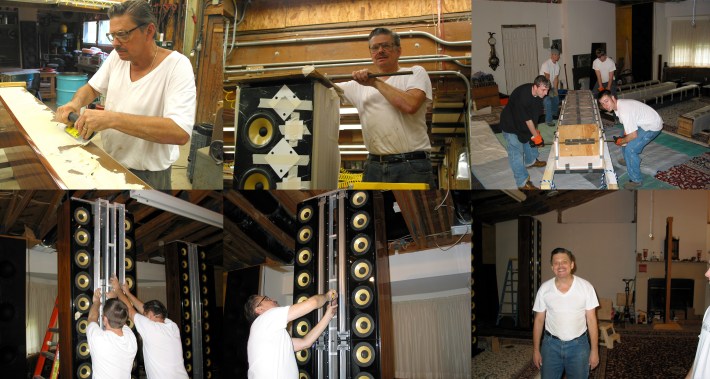
The three main speakers are line arrays, and each has 24 mid bass drivers, 4 massive planars, and 40 tweeters. They weigh 1400 pounds each and are veneered in rosewood. The grills are curtains of extruded rubber strings that hang like a veil. Each of the surrounds also weighs 500 pounds. The amps and processors are Krells, top of the line. The turntable is a monstrous beast he made himself that uses three massive motors, three different cartridges, and a vibration isolation platform custom-made by a company that normally produces them for scanning electron microscopes. It also contains a vacuum platter that sucks the record into it to limit any possible vibrations.
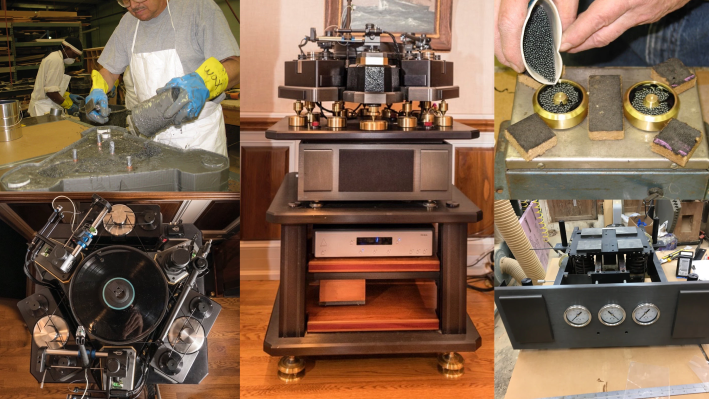
As someone who loves DIY projects, Ken is an inspiration. Yes, what he did cost a lot of money, and it’s certainly nice to be in a position to be able to do that. But what he did took so much time, craft and dedication. He also meticulously detailed and shared the process by which he made the arrays, laying it all out in “5,400 hours of fun” (Parts 1,2,3, and a photo of the entire process) and “A Turntable Of My Own” (Parts 1,2,3,4). Tons of audiophiles were captivated, with the documentary going somewhat viral, racking up 1.9 million views as of this writing. For a certain restless tinkerer, seeing Ken’s project is to see the trajectory of your ideal life laid out in front of you, flaws and all.
Ken had ALS, a heartbreaking thing to happen to a craftsman. He shared this in “One Man’s Dream.” In it, he says he is happy to have finished his project, to be forced to slow down and enjoy the time he has with his wife and kids, to just listen to some music, as the loss in dexterity made crafting in his shop impossible. There is a sense of clarity to this part of the video. He has accomplished everything he set out to do, when few people are offered such resources or opportunity. His family helped him in the process, but he knows he drove himself too hard in old age. He is proud that his kids inherited that Type A drive, but with a sense of proportion that he only attained in his final years. “I know that what I should have been doing and what all my kids are doing, they work hard, but they don't overdo it. They enjoy their family. They enjoy their free time. They have well-balanced lives. Something that I will finally start attaining at 76 years old.” Time went on. Ken’s condition progressed.
Ken passed away in 2022. If there is a special heaven for Tinkering Dads, I think Ken will appear at the right hand of God, a choir of angels playing his favorite piece of music, “Swan Lake,” through horns so massive and clear that the lord himself could not lift them.
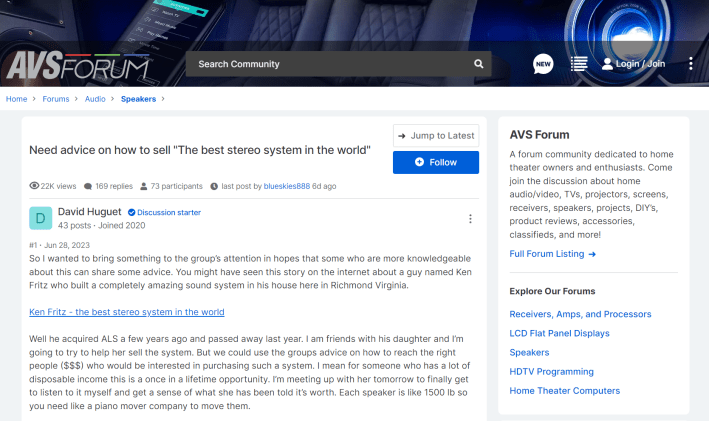
Earlier this year, a post came up on the AVS forums titled “Need advice on how to sell ‘The best stereo system in the world’” from a friend of Ken's daughter attempting to set up an auction. Ken’s stated hope in the documentary was to keep the system as one piece, possibly going to a wealthy buyer with the space and resources to accommodate such a massive system.
“I’d hate like heck to see this room parted out. For one thing it would be pretty hard to get rid of something like these loudspeakers. Anybody who would have an interest in it would need a room as big as this. I do not want this stuff parted out: a couple amplifiers go here, and a couple go there. That’s just like breaking up a dream and I wouldn’t be happy doing that.”
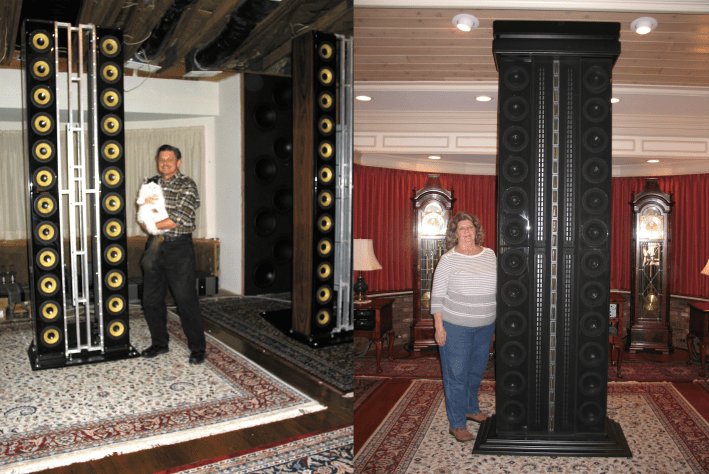
It’s a perplexing question. What are the logistics of selling something that huge in one piece? How do you price the most impressive DIY audio project in history? And what’s the monetary value of another man’s dream?
Getting a single buyer for a system that large and with so many parts is unrealistic. I can’t know how Ken felt about that after the documentary, but given the lengths he went to build a space for the system, it was going to be a tough task to find a buyer who could house the massive tall line arrays, let alone drive them. The dorky gear nerd in me would hope that the system could exist in some kind of museum, a testament to a single man’s dream, somewhat like the train museum Northlandz in New Jersey. But the gear hunter in me knows how these things go. The system was parted out and auctioned off, and it ended last week.
The auction listings are revealing to flip through, even outside of the audio equipment. YouTube channel SterooNiche has a good breakdown and analysis of it as well. Pricing these things is hard, and unless it is a sculpture, the only pragmatic monetary value you can place on a DIY build is in its components, the individual drivers and parts without even touching the labor or design involved.
The main speakers themselves were appraised at $216,000 just based on their parts, and went for $10,100 dollars at auction for all three. That makes sense logistically but still makes an audio nerd’s heart skip a beat. Ken’s gargantuan turntable fared best – it was appraised at $52,000 dollars, and ultimately went for $19,750. Not bad, although you would blanch at how expensive turntables can get at the very high end. Other gear, like the Krell equipment and some customized JBL speakers, went pretty close to their market value.
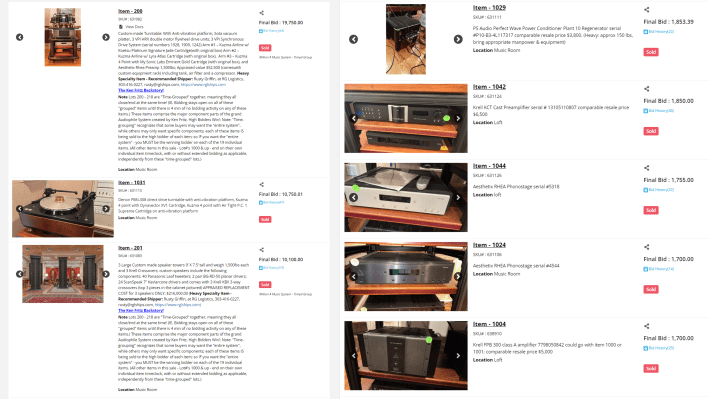
A person who says they bought the custom JBL speakers commented on StereoNiche’s video, “I bought the JBL set for $2600.” YouTube user Joe F commented, “I haven't seen them yet but I am looking foward [sic] to getting them home and hooked up. I always followed Ken's build and never realized I lived 2 blocks away.”. Every single post and video about Ken brings these kinds of comments.
Ken was, by all accounts, a wonderful man. Audiophiles can range in temperament from snobby to goofy, but there is an intoxicating joy and warmth to hearing Ken talk about his system. He loved music and technology, he loved the process of building it, and every YouTube and forum comment from the community is a testament to that. A life well lived and shared among many will not go unremarked. The comments about Ken are seemingly endless.
“Our company did business with Ken for years before I retired last year,” reads one by Bill Houck in the comments for “One Man’s Dream”. “The only thing close to his finished product was his shop, also located in his home. His wife and daughter were/are gems, as was Ken before he passed. True gentleman genius.”
“I am lucky enough to have heard this system, but I consider myself even luckier to have met Ken and been the recipient of his kindness, generosity, and passion,” a comment by Nicholas Tolson on YouTube reads. “Thank you.”
“I think he’s the legacy,” his daughter said in an interview. “I think what it took for him to create this is what the legacy is.”
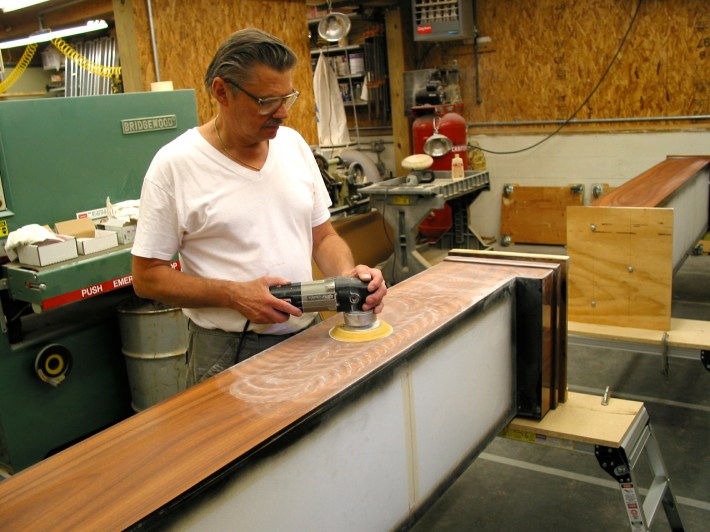
When you become a collector and tinkerer, you end up going to a lot of auctions and estate sales. To be engrossed in a hobby this way is to be tangentially exposed to death. The deals you score are sometimes another man’s dream. Every beautiful bauble becomes another object that your loved ones will have to sell, rehouse, or give away – a keepsake that has to be accounted for. You can build the greatest sound system in the world, but you cannot take it with you.
But, if you are like Ken, you can do something truly wonderful. You can leave a legacy, a reputation for being warm, inviting and helpful. You can share your projects. You can make a song of your life and open it to others. You can inspire people to care about craft, not for the sake of a thing to own, but out of a true sense of dedication. And hopefully you pass those things on to your children, as the hope of every good father is to instill in their child all of their strengths and none of their flaws. I like to think Ken accomplished that. That is something that cannot be sold off in constituent parts. It will last longer than any stereo system ever built.
Special thanks to reader @PunishedPT for the tip.


